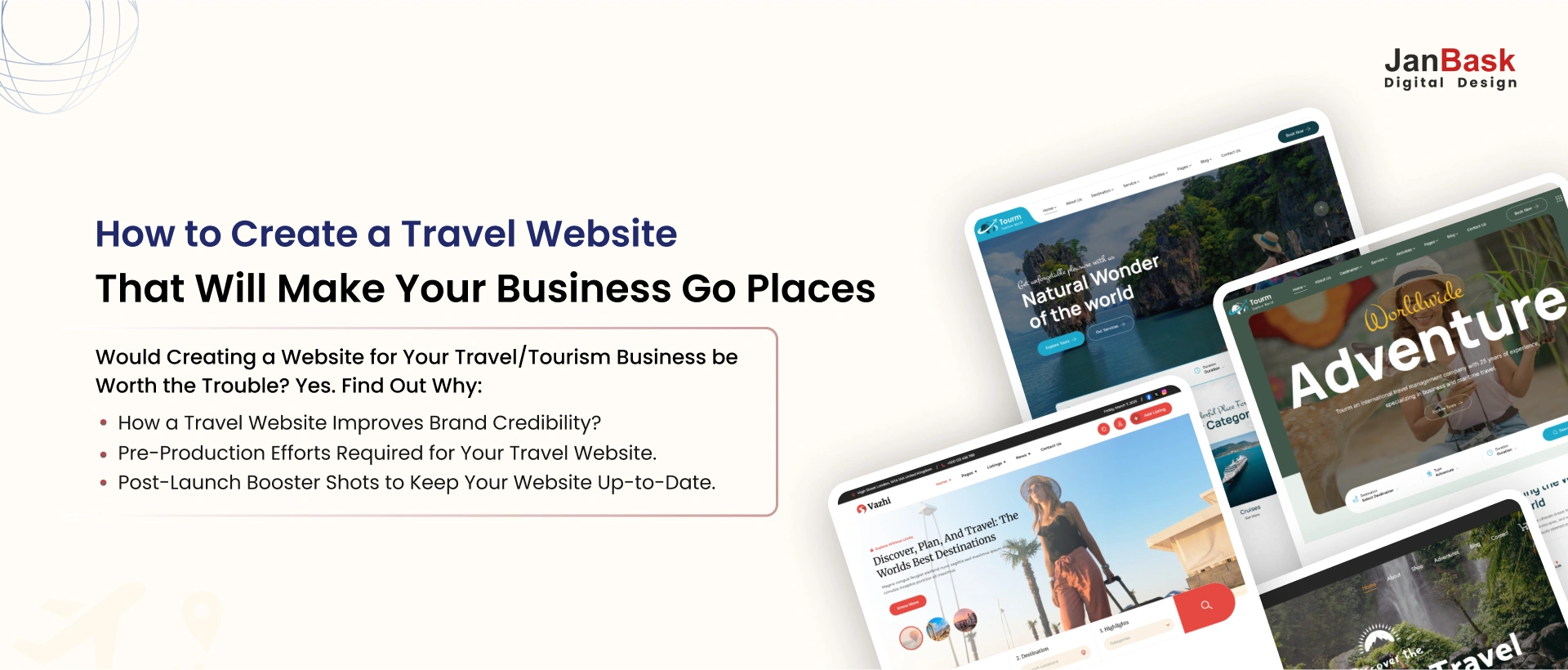

Website is one of the most successful marketing techniques that are advancing the education sector. It has been a fantastic course that effectively promotes online learning, enhances the standing of educational institutions, and even enforces the educational process. Most educational companies have customized and resourceful websites to boost conversions, build the brand, and boost trust.
However, some university's websites lacks because of their design. The complex designs make a student leave the website without even understanding its worth. Any university website should be able to showcase its worth. It should answer all the questions of “why” of the student in a simple yet convincing way.
The issue is that websites for universities are sometimes extremely huge. This makes it even harder to deliver the appropriate information to your audience in the fewest number of clicks possible. The perfect menus can make all the difference in the world for your website. So, let’s not wait and discuss the tips to make the university website better.

Looking to Create Performance-driven Educational Web Designs?
It's not difficult to develop an accurate website for your college or university. Simply think as a student will do. What details are they looking for? How did they find the information that was provided? Can they genuinely get access to the data they require?
The following three elements are crucial to university website design:

1. Usability: Refers to how accessible your website is to all users. It covers things like how simple something is to understand, how quickly visitors can complete activities if they can remember how to use your website after periods of inactivity, what mistakes are made, and how enjoyable or annoying it is to use. Users tend to leave the website if it takes time in loading. So, try to make a website that has a specific speed capacity for users.
2. Accessibility: Everyone has the same access rights to information as those without disabilities. You are losing out on more than 10% of traffic from prospective and current students who have disabilities if you disregard this crucial element of effective higher education website design. Make sure your website is perceivable, operable, comprehensible, and resilient to maintain accessibility compliance.
3. User experience: User experience is part of usability and accessibility but all depends upon how interaction takes into account your site visitors' complete experience, including how they identify with and require what your website has to offer, how the website design makes them feel, and whether they feel personally and helpfully connected to your website.
Using all these elements mentioned above, we have made a list of tips you can follow for university web development.
What's more important than displaying the name of the university? Nothing.
Everything lies in the name. If the student clearly sees the name of the university, there is more chance for them to remember it and visit again. So, your college or university's name should be prominently displayed on every page.
The primary reason is, that students generally search the universities on google (for eg, the top 10 universities in the US), and google might take them to any internal page of your website rather than the home page. Users must be aware of which university they are viewing, especially for subsites and microsites. Even while it may be evident to you, not everyone will be aware that the College of Commerce is a component of your university. You make it simple for users to recognize you by prominently displaying your complete institution name on each website.
Many websites make the error of neglecting the "About Us" page, but university websites should take great care to avoid this. A website's "About Us" page frequently receives a lot of traffic, so it's critical to contain relevant information that is well-written.
Some of the things to include on the “About Us” page are:
A fantastic method to give potential students a taste of what your university has to offer is to create an interesting and informative "About Us" page. But remember, everything you write here should be in easy language and quick-to-read facts. Students generally do want boring or lengthy paragraphs.
Believe it or not but students do get fascinated by the looks of the university. So, make your website visually appealing. Try to use actual images of the student playing football or studying in the library. These live images attract the students and help them build an image of their 3 or 4 years living in your university.
Use high-quality pictures or maybe a short video to show;
Let the images bring the website alive with the people and experience. Visitors always love to see the specialty of the college and believe they are more attracted even if they can imagine themselves enjoying themselves while studying.
How much ever fascinating your university is, a student is only enrolling if he finds the course he is looking for. A university website should clearly make a section of programs and courses offered by them. The majority of the students are not aware of the course available and leave the website without even looking for it. Why? because of the complex design structure that forces them to find the course. Make sure to make a different section for different kinds of students like;
Clearly mention what kind of courses each program contains and the subject involved. These minor details will help students identify the subject of their choice.
You can brag all you want about your school, but ultimately your audience will believe what your present and former students have to say. So why not include some of those viewpoints in the design of your academic website? A very valuable set of recommendations for your university is produced when you ask your students what makes it wonderful, why they love going there, and how it operates.
You can most testimony or short videos of the students talking about their experience in your university. Additionally, they don't always have to be course-related experiences. Sometimes, just having a student sound genuinely happy or excited when talking about a certain topic can be a recommendation in and of itself. So, choose a testimony wisely while keeping in mind the target audience.
Your website fails if a page takes longer than three seconds to load. Therefore, you must make sure that your website has a quick page load time if you want to retain visitors there. Your website should ideally load all of its pages in one or two seconds. Otherwise, every visitor to your site will click the back button. So how do you go about doing that?
You can cache your pages and compress all of the images you use, among other things, to help your pages load more quickly. You may then monitor your load speeds using a service like Google Analytics to check if they're where you want them to be.
Looking for Cost-Effective Custom SEO Services?

A university website is mostly viewed by prospective students. These students are in the hunt of choosing their careers. The main goal is to guide prospective students toward the educational pathway that best suits their individual needs. You can students to give a survey asking them various questions like
And so on. All these questions will help them to move to the next page, simply clearing their doubt and ultimately reaching their desired course and its details. This survey will help you locate a conversion path and examine which paths receive the most visitors through google analytics.
A social media menu is essential to any modern website. You can use symbols to showcase different social media handles. You can design the website in such a way that, when a student clicks on the symbols, it takes them to a page that outlines the institution's social media policy and a list of all the Facebook/Instagram sites that fall under its authority. These social media handle not only help the student go through the university-posted stuff but only the student-posted ones also. This will help the student to understand the universities from the student's point of view as well.
Here are some benefits to connecting with the audience through social media:
College students' difficulties with mental health have reached crisis proportions in recent years. Although financial stress and academic pressure have long been significant causes of poor student mental health, the new education system has brought them to the surface. As a result, most of the students indicated they had experienced depression coping with their studies and mental health is an issue that is becoming more serious at their institution.
Universities have started putting more emphasis on wellness and mental health resources across their websites in response. For instance, offers counseling services and resources for mental health on its website for students, faculty, and staff to showcase that you care more about the student than just their money.
Apart from the campus and course, the students are also concerned about the afterlife of their college. They are keener to know whether the investment in education will pay off after graduation or not.
Universities should give information on what their graduates are doing after graduation, along with statistics and references to back up their statements. Make job placement statistics accessible, at the very least, via links from the Alumni part of the university About Us, Admissions, and/or Career Center pages. If your university doesn't already have this information, start gathering it right away so you can display it.
The importance of interactive web features is the last recommendation on our list of web design suggestions for institutions. In the context of website design for universities, "interactive" essentially means that it should be available to answer any doubts the student has.
The university website should include a live chat system for the students to ask about specific details such as the scholarships they have earned, the dorm they intend to live in, fee structure, etc.

There are many factors to take into account while building your college or university website, but if you take the time to analyze each choice before making one, you'll save having to make significant adjustments after your website is finished.
So, give all the time in the world to create an attractive and informative website for students and faculty. Remember, like all universities are unique in their own way, so be its website.
Interested in our Web Design & Development Services?

K
Information is very clear and easy to understand.
P
This was a very simple article to read. You kept it relevant and easy to read. Thank you for your insight! I’ll make sure to keep this information in mind when designing my website!
A
This was such an insightful article, thank you!
A
Excelente!!! Muchas gracias
K
I like the content, the way you presented in brief.
E
Thank you for this fantastic article. A good web design lowers the bounce rate.
Z
The tips you pointed out are really spot on, especially the dont’s and do’s really an eyeopener. Thank you for sharing
A
Thank you for sharing your lovely and informative post. It assists me in expanding my understanding of the significance of university websites.